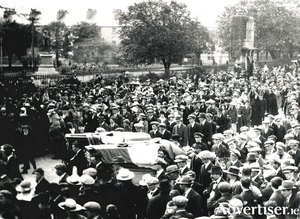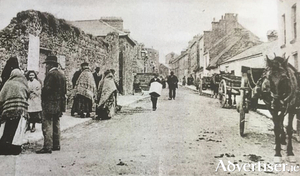Search Results for 'Bakers Hotel'
4 results found.
Father Michael Griffin

Michael Joseph Griffin was born on September 18, 1892, in Gurteen in east Galway, one of five children of Thomas Griffin and Mary Kyne. He was educated locally, then in St Joseph’s College, Ballinasloe, and finally in Maynooth. He was ordained in April 1917 and was seconded to the Galway diocese. He worked for a year in Ennistymon and in June 1918 was transferred to the parish of Rahoon which stretched from the river out to Furbo and Corcullen. He developed a great rapport with the children of the parish, spoke in Irish to young and old, organised feiseanna, currach races, and donkey races on Silver Strand.
Some nasty close shaves in Galway

Baker’s Hotel and Billiard Rooms on Eyre Street was run by Captain Baker who had served with the British army during the war. It was much frequented by the Black and Tans, some of whom (including Edward Crumm) stayed there. Baker’s daughter Eileen, who had recently saved a little boy named Hennessy from drowning in the canal, gave evidence at the military enquiry into the death of Constable Crumm. The local volunteers suspected her of being too friendly with the Tans, and because of that she had a startling experience on the morning of September 18, 1920.
A violent night in Galway

Edward Krumm was 5ft 11in, 26 years old, a bachelor and a member of the Church of England from Middlesex. He was a lorry driver with the Black and Tans and had been in Galway three weeks when he arranged to meet a civilian driver he had come to know in a pub in Abbeygate Street. This man, Christopher Yorke, described Krumm as a “generally reckless fellow who drank a lot”. Krumm was fairly drunk, brandishing a revolver and bragging that he could knock the neck off a bottle at 10 yards' range, and apparently shot at a few bottles in the pub.
Eyre Street at the turn of the century

Edward Eyre arrived in Galway with the Cromwellian army, became a major political figure, and secured extensive grants from the Corporation and a considerable amount of property in both the city and county, mostly from displaced Catholic families, in the period 1660 to 1670. Most of this property was outside the town walls and included areas that we now know as the railway station, Forthill Cemetery, Victoria Place, Merchants Road, the Commercial Dock, Woodquay, Suckeen, and Eyre Square.

